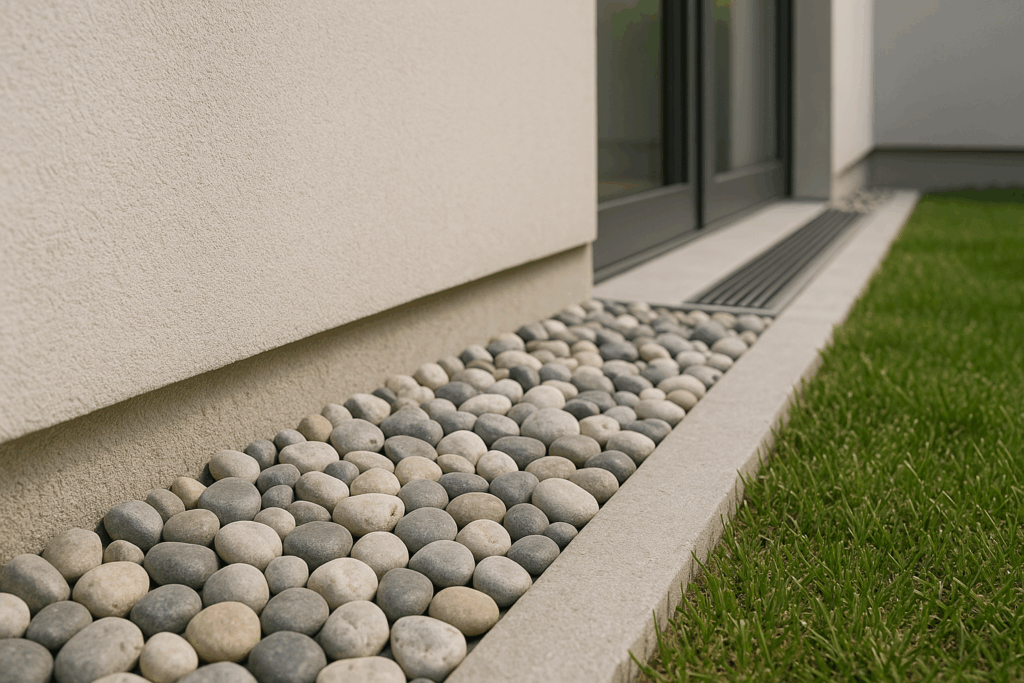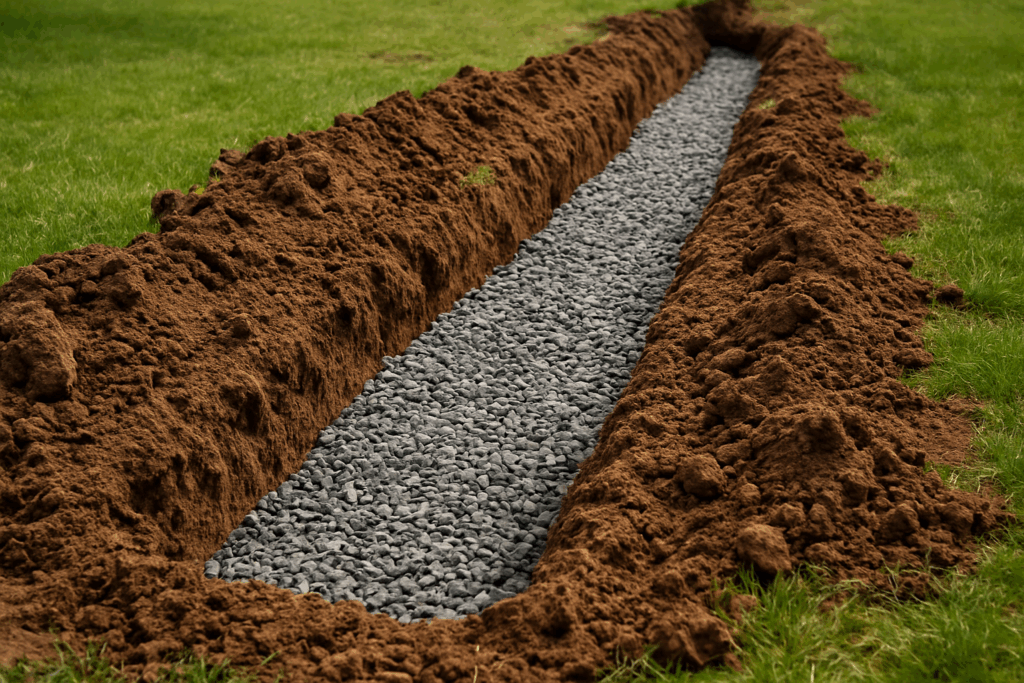
As the leaves begin to fall and autumn rains roll in, homeowners across our region face a common seasonal challenge: keeping their yards and foundations dry. Fall’s beauty comes with a hidden risk—clogged drainage systems that can lead to standing water, soil erosion, and even flooding. One of the most effective tools for protecting your property from excess water is the French drain. When paired with proactive fall maintenance, a French drain can keep your home safe and dry year-round.
Understanding the Role of a French Drain
A French drain is a simple yet highly effective drainage system designed to redirect surface water and groundwater away from your home. It typically consists of a perforated pipe buried in a trench and surrounded by gravel, which allows water to flow through freely while filtering out soil. The system takes advantage of gravity to guide water away from vulnerable areas, such as your home’s foundation, basement, or low-lying parts of your yard.
During the fall, when rain mixes with leaf debris, a French drain becomes even more critical. Without proper drainage, water can pool in your yard or seep into your home, causing costly damage and creating an environment for mold growth.
Why Fall Puts Your Drainage System to the Test
Autumn weather can be unpredictable. A week of dry, crisp days can be followed by heavy rains that overwhelm your yard’s natural drainage. At the same time, falling leaves can block gutters, downspouts, and drainage grates, creating water backups that put pressure on your home’s foundation.
Leaves and organic debris can also infiltrate a French drain if it’s not properly maintained. Over time, these materials can reduce water flow through the pipe and gravel bed, decreasing its effectiveness just when you need it most. That’s why pairing your French drain with a seasonal maintenance plan is key to preventing flooding during leaf season.
Signs Your Property Could Benefit from a French Drain
Even if your yard looks fine during summer, fall rains can reveal hidden drainage problems. Watch for these signs that your property might need a French drain:
- Standing water that lingers for more than 24 hours after rainfall
- Soil erosion or washed-out landscaping near your foundation
- Muddy areas where grass struggles to grow
- Basement dampness or water intrusion after storms
- Visible water flow toward your home during heavy rain
Addressing these issues before the peak of leaf season ensures your yard can handle the extra water load without damaging your property.
Fall Maintenance Tips for Your French Drain
Keeping your French drain functioning properly through the fall is all about preventing clogs and ensuring water can move freely. Here are some essential seasonal maintenance tips:
- Clear surrounding areas of debris. Rake leaves and organic matter away from your drain’s entry points to prevent blockages.
- Check your gutters and downspouts. Clogged gutters can overflow and direct water toward your foundation instead of into your drainage system.
- Inspect drain grates and covers. Make sure any surface inlets are free of leaves, dirt, or mulch that could slow water flow.
- Flush the system if necessary. A professional can use a high-pressure water jet to remove buildup inside the pipe.
- Monitor during storms. Observe how water moves on your property during heavy rainfall so you can address any problem areas quickly.

The Benefits of Professional Drainage Installation
While some homeowners attempt to install French drains on their own, a professionally designed and installed system ensures maximum effectiveness. A drainage expert will assess your property’s slope, soil type, and water flow patterns to determine the optimal placement and depth of the drain. They’ll also use high-quality materials and proven installation techniques that extend the life of your system.
For homes in areas prone to heavy autumn rains or surrounded by mature trees, professional installation and seasonal checkups can mean the difference between a dry, healthy yard and costly flood repairs.
Integrating French Drains with Other Fall Flood Prevention Measures
French drains are most effective when they’re part of a comprehensive drainage strategy. In the fall, that means:
- Keeping gutters and downspouts clean and directing water away from your home
- Ensuring grading slopes water away from your foundation
- Installing gutter guards to reduce leaf buildup
- Using catch basins in high-debris areas to intercept leaves before they reach the French drain
By combining these methods, you create a multi-layer defense against water damage during the wettest months of the year.
Why Addressing Drainage in the Fall is Critical
Some homeowners wait until spring to address drainage issues, but by then, the damage from fall and winter moisture may already be done. The combination of autumn rain, leaf accumulation, and freezing winter temperatures can strain your home’s foundation and create persistent water problems.
Tackling drainage improvements in the fall not only protects your home immediately but also sets you up for a smoother transition into winter and spring.
Get Expert Help Before the Next Storm
If your property shows signs of poor drainage or you’re concerned about leaf-related clogs, now is the perfect time to act. A well-designed French drain paired with seasonal maintenance can save you thousands of dollars in repairs and give you peace of mind during unpredictable fall weather.
Contact us today to schedule a drainage evaluation and learn how we can help protect your home from fall flooding.
